Celebrations start earlier in Gujarat than in the rest of India, commencing on Aygaras, the 11th day of the Krishna Paksha of Aaso. On the 12th day is Vagh Baras, the festival of the cow and the calf. On the 13th day is Dhanteras, the days Diwali starts in the rest of India. The 14th (elsewhere known as Naraka Chaturdashi in South India and Choti Diwali in the North) is celebrated as Kali Choudas. The 15th (new moon day) is Lakshmi Puja, celebrated throughout India. The next day, the first day of Shukla Paksha of Kartik, is Bestu Varsh, New Year's Day, start of the Gujarati calendar. The 2nd day of Kartik is Bhai Bij, the day Diwali ends.
A further celebration takes place on the 5th day of Kartik, Labh Pancham.
Tamil Nadu:
Known as Deepavali, in Tamil Nadu (meaning garland of lights). It commemorates the death of Narakasura at the hands of Lord Sri Krishna. It is believed that Narakasura, a wicked demon, tortured common people and they prayed lord Krishna to defeat him. The people then celebrated narakasura's defeat with sparkles, lights and crackers. This celebration was continued down the generations as deepavali. The day begins with an early morning oil bath, wearing new clothes, bursting of crackers, visiting Lord Ganesha, Lord Vishnu/Siva temples. The exchange of sweets between the neighbours, visiting the relations, preparing Deepavali special sweets are tradition of the day. Typical Deepavali celebrations begin with waking up early in the morning, before sun rise, followed by an oil-bath. The bathing tradition involves extensive massaging of warm til-oil containing pepper corns, betel leaves. New clothes are typically worn as a part of celebrations. After the bath, a home-made medicine known as "Deepavali Lehiyam" is consumed, which is supposed to aid in soothening digestive problems that may ensue due to feasting that occurs later in the day. Extensive use of sparkles,crackers and lights, much like the rest of the world where Deepavali is celebrated.
Karnataka
It is celebrated as Deepavali (deepa + aavaLi ? light + abundance in Kannada. It is celebrated on the previous and next day of amavasya (No moon day) as naraka chaturdashi (before no-moon day) resembling Satyabhama's victory over narakasura and as balipadyami the first day of kaarthika masa; inviting the greatest emperor of times Balichakravarthi to each and everybody's homes. The entire house is cleaned and new clothes are purchased for the entire family which is followed by lighting of oil lamps around the house and bursting firecrackers. The tradition in Kannada families is that all members gather together for the three days celebration. First day they'll start with bursting crackers, followed by lakshmi mahaapooje on amavaasye (no-moon day) and then on third day decorating the whole house and especially entrance with flowers and floor decoration to invite bali to their homes; a special fort-entrance kind of thing is made on the entrances of every home which is made out of cow-dung(gOmaya) and sandalwood(siri-chandana) which both have a high divine reverence in Kannada tradition. Also fire-camps are kindled on both naraka chaturdashi and balipadyami days of deepavali; where in respective community people's gathering is significant and huge firework bursting ceremony happens. Later the whole karthika maasa (till next no-moon day) is celebrated by praying kunti idol in every house; this signifies that kunti; the mother of great pandavas has come to mother's (tavaru mane in Kannada) home for karthika maasa. In villages on the third day balipadyami also known for gOvpooje (reverence to cows) all the cattle in the home are decorated gorgeously and are prayed for good will of next coming year.
Kerala
Deepavali falls on the preceding day of the New Moon in the Malayalam month Thulam (October–November). The celebrations are based on the legend of Narakasura Vadha - where Sri Krishna destroyed the demon and the day Narakasura died is celebrated as Deepavali. It commemorates the triumph of good over evil. It's celebrated with more enthusiasm in the southern parts of Kerala compared with northern Kerala. Firecrackers are burst and Ottamthullal performances are hosted. Exchanges of gifts and dresses are usually held. Especially on the 4th day of celebration, the ladies are invited to their father's house on the 4th day after the 'Deepavali' and given dress and money as gifts. The entire family buy new clothes, sweets and many other decorative items to decorate their home. Firecrackers are a major item found in all houses especially during diwalis. Children along with their friends and cousins have a lot of enjoyment and enthusiasm. Humongous amounts of sweets are made, some of the sweets are jelebi, laddoo, unniappam, paalappam etc. are made at every house. They decorate their homes with diyas (or deepams) and light many fire crackers especially a stick-like cracker called Kambithiri in Malayalam. All families decorate their homes with rangolis or flower designs. They hold a special Pooja in which newly painted idols of gods are prayed to.
Andhra Pradesh
In Andhra Pradesh, this comprises two days. The First day is Naraka Chaturthasi, Deepavali Amaavasya . The festivities start out at the crack of dawn and carry on well into the night. Most people make a trip to the local temple along with their families to seek the blessings of their respective Gods. The night sky is lit up with a scintillating array of noisy fireworks.
There are some traditional customs followed such as buying new clothes for this festival. Buying new home or vehicles is considered auspicious. Special sweets are made too. Some eateries in Hyderabad make some delicious sweets during Diwali which will not be available at any other time. Tradition has it that Andhraites gift sweets during Diwali. Some areas host local stage story telling called Hari Katha. Some areas may put a huge Narakasura dummy made with firecrackers. This will be burst by a person dressed as Lord Krishna or, more accurately, a costume of Satyabhama, the consort of Lord Krishna, who actually killed the demon Narakasura; an event that is celebrated as Diwali for generations.
People clean/white-wash or paint/decorate their homes as it is a very auspicious day; to welcome the goddess of wealth and prosperity i.e. Lakshmi devi to their homes. Homes are lit up with hundreds of diyas and colourful Diwali Rangolis (link) adorn the doorways. After all this preparation all the members of the family perform the Lakshmi pooja. Another custom involves decorating homes with paper figures.
Maharashtra
In Maharashtra, Diwali starts from Vasubaras which is the 12th day of the 2nd half of the Marathi month Ashvin. This day is celebrated by performing an Aarti of the cow and its calf - which is a symbol of love between mother and her baby.
The next day is Dhana Trayodashi. This day is of special importance for traders and business people. It is also considered an auspicious day for making important purchases, especially metals, including kitchenware and precious metals like silver and gold.
This is followed by Naraka Chaturdashi. On this day people get up early in the morning and take their bath before sunrise while stars are still visible. Bathing is an elaborate process on this day with abundant use of 'utnas', oils and perfumes, and is preceded by an Aarti performed on the person by some lady, usually mother or wife. The whole process is referred to as 'abhyanga-snaan'.
Then comes Lakshmi- pooja. It occurs on Amavasya i.e. no moon day. The dark night is illuminated by lamps and at dusk firecrackers are burst. New account books are opened after a pooja. Generally the traders do not make any payments on that day (according to their belief Lakshmi should not be given away but must come home). In every household, cash, jewellery and an idol of the goddess Lakshmi is worshipped. Friends, neighbours and relatives are invited over and celebrations are in full swing. The broom used to clean one's house is also worshipped as a symbol of Lakshmi in some places .
Padwa is the 1st day of the new month – Kartik in the Hindu calendar. It marks the start of Hindu financial year. Its a special day for Husband and wife. The wife puts tilak on her husbands forehead and gives him an expensive gift. In recent times there is a growing trend of organising a cultural event called 'Diwali Padwa' early in the morning.
Bhaubeej – it is the time when the bond of love between a brother and sister is further strengthened as the sister asks God for her brother/s' long and successful life while she receives presents from her beloved brothers.
On these days People makes 'Faral' like Chakali, Laddu, Karanji, Chiwada etc.
Orissa
Tarpanam is done in the morning of diwali. All the members of the household gather together just after dusk. A rangoli(Muruja) of a sailboat is made on the ground. The boat has seven chambers in north, ten chamber in east, and twelve chamber in south.the east chamber are meant for gods.north chamber for seer or Rishi and south chambers for manes and forefathers. Over the drawing of each different chamber several items are kept - cotton, mustard, salt, asparagus root, turmeric, sweets, cakes and a wild creeper. Over the central chamber are the offerings meant for [prasad]. Perched over the prasad is a jute stem with a cloth wick tied around the edge. It is lit at the beginning of the puja. All members of the family hold a bundle of jute stems in their hands, Lighting their respective bundles from the flame on the rangoli, they raise them skywards fo their forefathers chanting: Badabadua ho andhaara e asa Aluaa e Jaao Baaisi pahacha e Gadagadau thaao (meaning-oh our ancestors, seers and gods you came on the dark night ofMahalaya, and now it is time for you to depart for heaven, so we are showing light, may you attain peace in abode of Jagannatha)
Beside the rangoli, a mortar and pestle and a plough are also kept and worshiped.. For Diwali houses are brightly lit, with the doors and windows kept open as Lakshmi is supposed to visit every home, and you can't afford to leave it dark and abandoned. Various kinds of Pithas are prepared and given to the deities and forefathers, and enjoyed with family and friends. The ritual of Kali Puja is a famous affair in puri, Bhadrak, Rourkela, Cuttack &Jajpur area.
Mithilanchal, West Bengal & Assam
Kali Puja is light-up night for Mithila region in Bihar, West Bengal & Assam, corresponding to the festival of Diwali (pronounced Dipaboliin Bengali), (in Maithili, it is known as Diya-Baati) where people light diyas/candles in memory of the souls of departed ancestors. The goddess Kali is worshipped for whole night on one night during this festival. This is also a night of fireworks, with local youth burning sparklers and firecrackers throughout the night. Both the traditions of worshiping the Goddess Kali as well as Goddess Lakshmi and Lord Ganesha is prevalent in the Mithila region. Kali Puja is also known by the names of Shyama puja or Nisha puja in the Mithila region.
Goa and Konkan
Divali begins in Konkan and Goa on the day of Naraka Chaturdashi. The houses are cleaned and decorated with kandeel, lamps, mango leaves, and marigold flowers. The utensils are made to shine, filled with water, and decorated for the holy bath the following morning. On this day, paper-made effigies of Narakasura, filled with grass and firecrackers symbolising evil, are made.[citation needed] These effigies are burnt at around four o'clock in the morning the following day/ Firecrackers are burst, and people return home to take a scented oil bath. Lamps are lit in a lineThe women of the house perform Aarti of the men, gifts are exchanged, a bitter berry called kareet is crushed under the feet in token of killing Narkasur, symbolising evil and removal of ignorance. Different varieties of Poha and sweets are made and eaten with family and friends. Festivities continue till Tulsi Vivah and lamps are lit every evening. Celebrations include Lakshmi puja on the Diwali day, Krishna puja or Govardhan puja and cattle worship on Balipratipadaday, Bhaubeej, and Tulsi vivah.
See Next Comment...For Continuation...









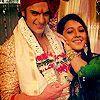



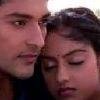




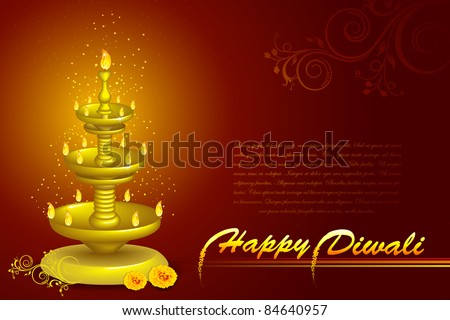

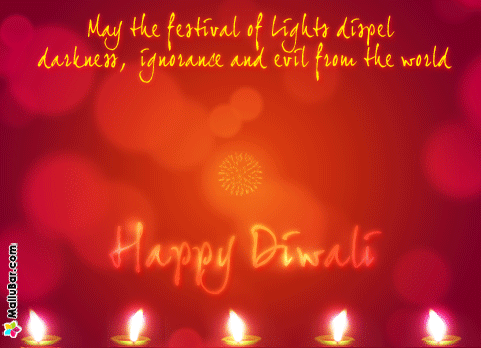
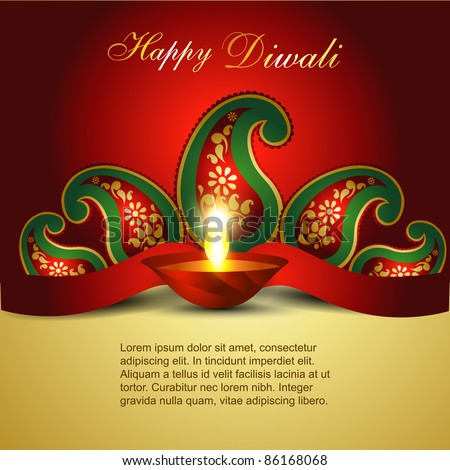




comment:
p_commentcount